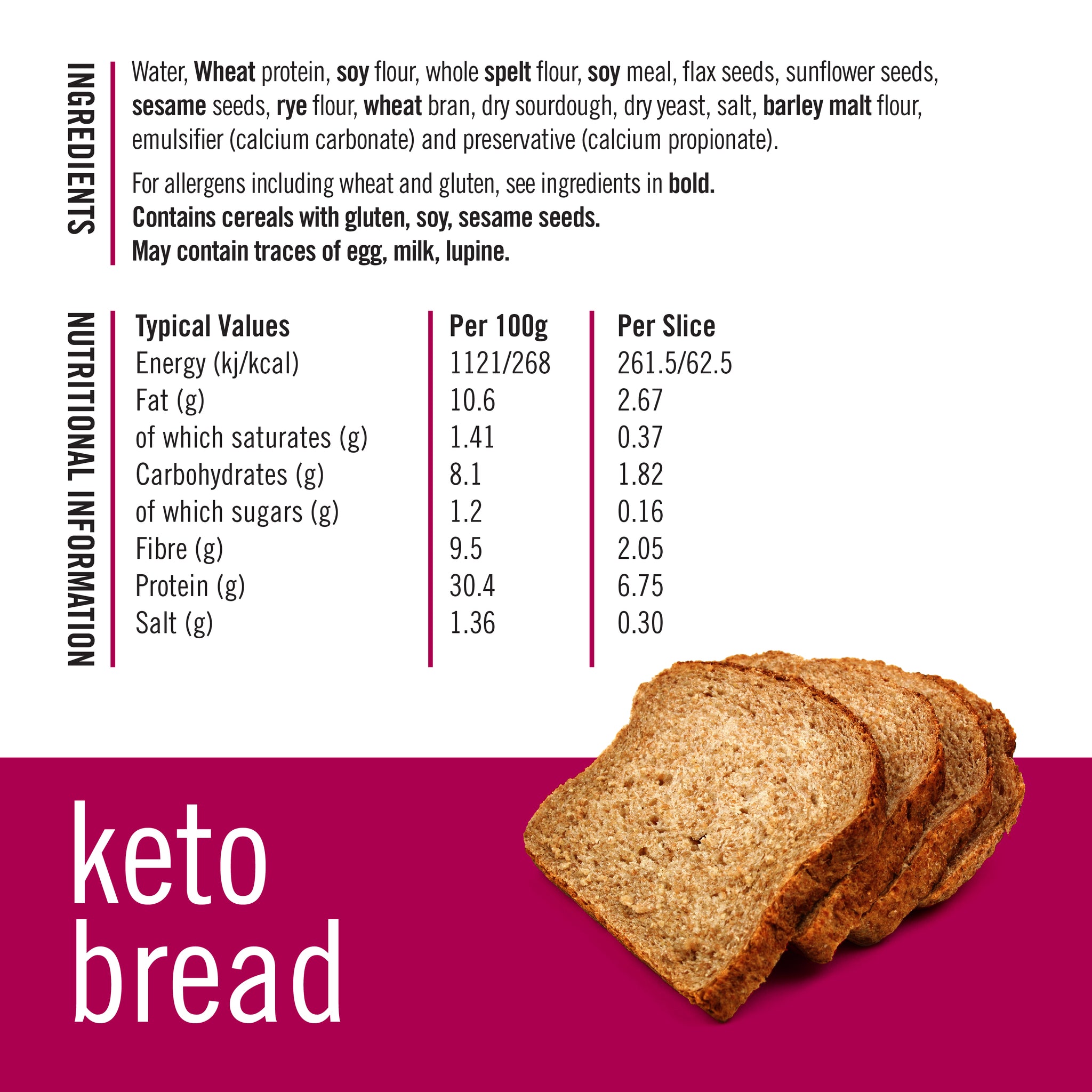Bread and the keto diet have for a long time been seen as incompatible. Bread is traditionally made from wheat flour which has been refined which is a good source of carbohydrates. For anyone aiming to maintain ketosis, even a single slice of bread can hamper progress by raising blood sugar levels and causing the body to burn glucose instead of fat. Many ketosis enthusiasts stayed away from bread altogether, missing out on the convenience and ease it brought to their everyday meals. However, today, innovations in baking have changed the story of bread.

Image credit: fitbakes.co.uk
What is Ketogenic Diet Bread Exactly?
Ketogenic diet bread isn’t just low carb it’s strategically designed. The bakers swap carb-heavy flours like wheat, corn, and rice with other components like flaxseed, almond or coconut meal. They then blend them with egg or plant-based protein to make bread that’s full of nutrients, but is almost entirely free of carbs. Its high protein content is among its best-known features. The 7 grams of protein per slice makes it not only keto-friendly, but also beneficial for muscle repair and appetite management.
The seed content is also crucial. Keto bread contains up to 17 percent seeds, like flax, sunflower, or chia. This is a source of high-quality fiber and an omega-3 fatty acid boost. These vitamins promote cardiovascular health, improve digestion and aid in ensuring that keto-lovers to eat enough without cravings. Keto bread is not like traditional low-calorie breads that sacrifice taste. Instead, it is focused on taste and health.
What’s the purpose of low-carb bread in blood sugar management?
The lowest carb bread is more than a diet-friendly option it’s a powerful tool for metabolic health. The bread, with just 1-2 grams of net carbs per piece, helps stabilize blood glucose, reducing spikes, crashes, and fatigue. For diabetics This bread isn’t only convenient; it’s transformative. It gives you the comfort of bread, and keeps healthy levels of glucose.
Low-carb bread can also fit perfectly in diets that are calorie-conscious. It is a great way to enjoy a hearty sandwich or toast for breakfast. For those who are concerned about weight loss, it is possible to use it to satisfy their hunger while keeping their the calories and carbs under control.
Bread on Keto, an Efficacious Everyday Solution
The expression “bread on keto” is no longer a signal of compromise. It is an opportunity. Breakfasts can include avocado toast with ketobread seeds which can provide healthy calories and fiber for healthy and balanced meals. It is possible to still enjoy a turkey and cheese sandwich for lunch at work and not go over your daily carbs. Even dinners such as garlic bread are possible when you choose low carb breads.
One of the most significant benefits of ketogenic breads is their flexibility. It’s not merely a sweet treat it’s a staple of an enduring keto-friendly lifestyle. It can be used in every meal and relieves the sensation of a lack of freedom that causes people to stop their diets.
Why Keto Bread Is the Future of a Healthy Diet
These breads will shape the future of healthy diets for everyone, not just those on keto. Ingredients such as plant-based proteins high-fiber, omega-rich seeds and omega-rich foods can benefit everyone, not just those who are looking to reduce their carb intake. Keto bread appeals to diabetics, athletes, weight-conscious people, and those who are simply looking for a healthier alternative in place of white bread.
Keto bread is a new type of baking, unlike diet trends which are merely like they’re only temporary. It provides long-term health benefits and solves the problem of how to eat bread that isn’t loaded with carbs.
Conclusion
The fight between keto diet and bread has come to an end. Thanks to innovation, ketogenic diet bread delivers the indulgence of a slice without jeopardizing ketosis. Now that low-carb bread is widely available it is possible to enjoy toast, sandwiches and snacks without fearing that they will violate their goals for a low-carb diet. Bread on keto is more than just an alternative. It is now the mainstay of modern-day nutrition, linking comfort food and healthy living.